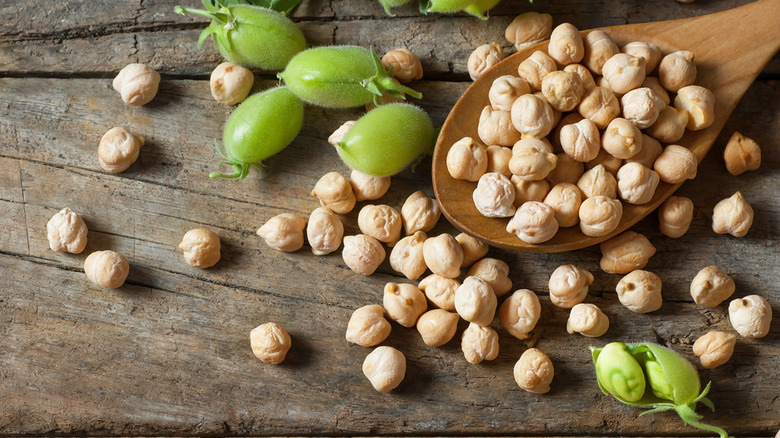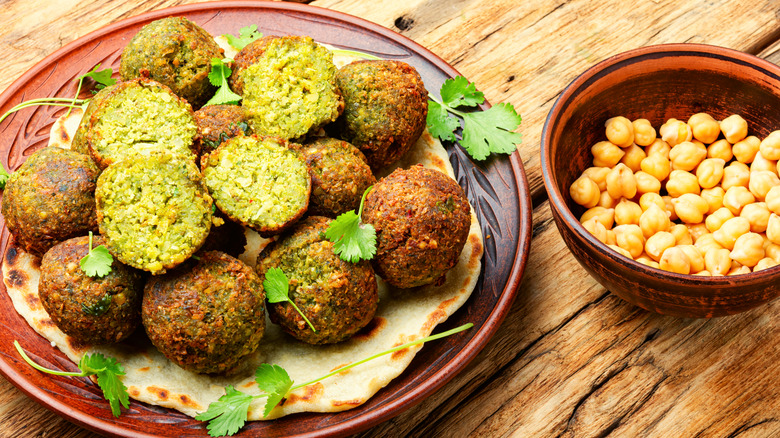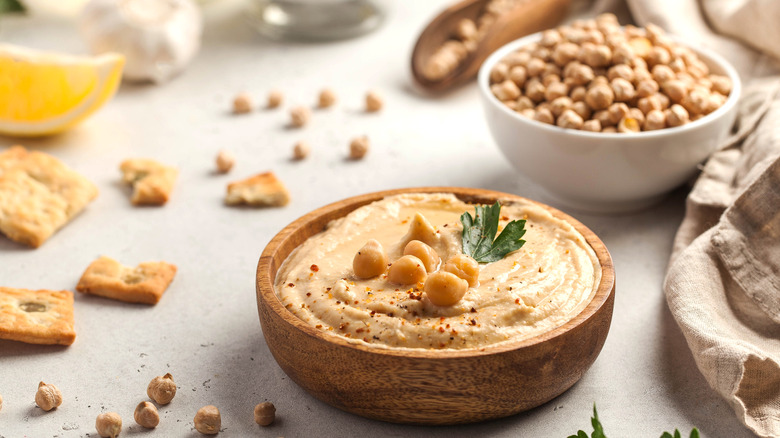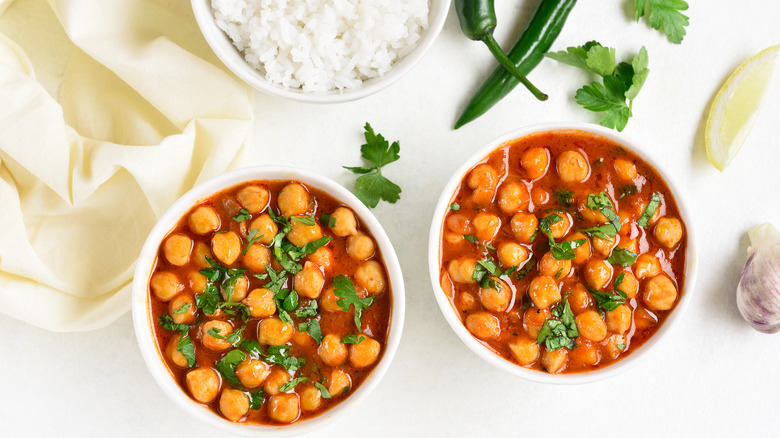Garbanzo Beans Vs. Chickpeas: How Are They Different?
You've probably heard of chickpeas, a popular and versatile ingredient used in all kinds of recipes. You've probably also heard the term garbanzo beans. But you might not know that, other than the name, the two are the exact same thing. Both terms are used to refer to a legume that comes from the Cicer Arietinum plant (via Spoon University).
In the English-speaking part of the world, they are more commonly known as chickpeas, which is derived from the Latin word "cicer," the name that was given to the plant by ancient Romans. Spoon University explains the French then adapted the term to "pois chiche," and around 1722, the word was Anglicized to the English term "chich-pease," which was eventually modernized to the singular "chich-pea."
On the other hand, the term Garbanzo beans comes from the Spanish word for the legume, and most likely comes from either the Old Spanish word "arvanço," or the word "garbantzu," which means "dry seed" in Basque, an ancient language spoken in northern Spain and Western France, according to Spoon University.
Humans have been eating chickpeas for over 7,000 years
The history of the humble chickpea actually dates back even further than the origins of its names. It has been eaten by humans since as far back as 7,500 years ago, and is one of the earliest cultivated legumes in human history, according to Tori Avey. Evidence has shown that people consumed the chickpea in civilizations as varied as Turkey, Greece, and France, as well as surrounding parts of Europe.
The chickpea has even been written about since as early as 800 AD, when none other than Charlemagne, the King of the Franks, recorded the different growing methods of the important legume in his text "Capitulare de villis." In other parts of the world, it has gone by other names, including the Bengal gram, the Egyptian pea, or simply gram, according to Biena Snacks. However, the most common terms for the legume in the English speaking world these days are "garbanzo beans" or "chickpeas," which are used interchangeably to refer to this healthy, tasty little bean.
Chickpeas are popular in vegetarian dishes
Chickpeas are similar to other nutritious beans like black beans, lima beans, and kidney beans, which are all part of the legume family, according to Harvard. The legume delivers a pleasantly mild, earthy taste, as well as a firm, grainy texture that makes it a great substitute for other starches, such as potatoes, especially in stews or casseroles, per Thrive Cuisine. They are popular in many popular modern meals like chickpea curry or healthy vegetable and chickpea bowls, per The Kitchn. They have long appeared in classic Mediterranean dishes, most notably as hummus, falafel, or in salads and wraps. They are also popular in classic Spanish fare, like tapas or spinach and garbanzo bean stew.
Back in the 18th century, some people even roasted chickpeas and used them as an alternative for coffee, a practice that became exceptionally popular during World War I, when chickpeas were grown and cultivated specifically for the purpose of brewing chickpea coffee, according to Healing Plant Foods. They can still be brewed today as a great caffeine-free alternative to the popular morning beverage.
These days, chickpeas are more well-known as a healthy plant-based alternative that is used in many vegetarian and vegan diets, thanks to their high protein content. Chickpea burgers, chickpea salad sandwiches, and even chickpea nuggets are all popular vegetarian alternatives that incorporate the nutritious legume, per Thrive Cuisine.
Chickpeas are loaded with healthy fiber and protein
Garbanzo beans also have high amounts of fiber and many other essential vitamins and minerals, including folate, manganese, and iron, while still being fairly low in calories, according to Healthline. Regularly eating the bean has been shown to help improve digestion, regulate appetite, and maintain a healthy weight, as well as help lower blood sugar, thanks to their high fiber and low glycemic index. In fact, studies have shown that consuming a diet high in chickpeas may help lower the risk of developing type two diabetes by helping to regulate the body's blood glucose levels. They also help reduce inflammation, which has been shown to be beneficial for people who suffer from type one diabetes, according to Medical News Today. Regularly consuming chickpeas has also been linked to a reduced risk of certain illnesses like cancer and heart disease.
There's certainly a reason why this little bean keeps showing up in dishes all across the world. So no matter what you call it, this legume is certainly a healthy, satisfying, and delicious addition to all different sorts of diets.



